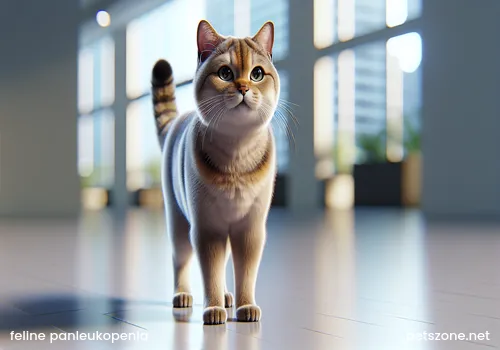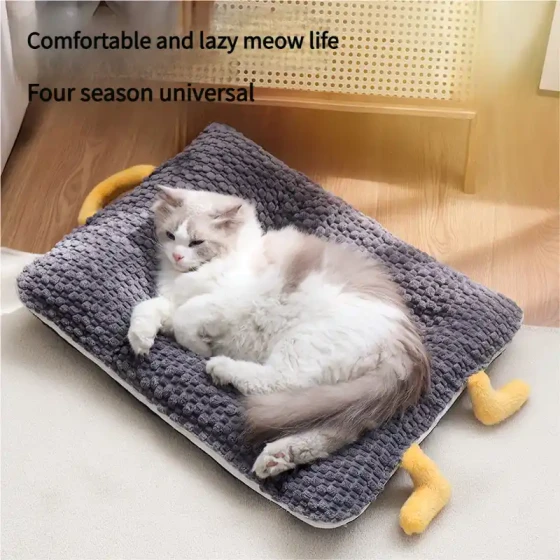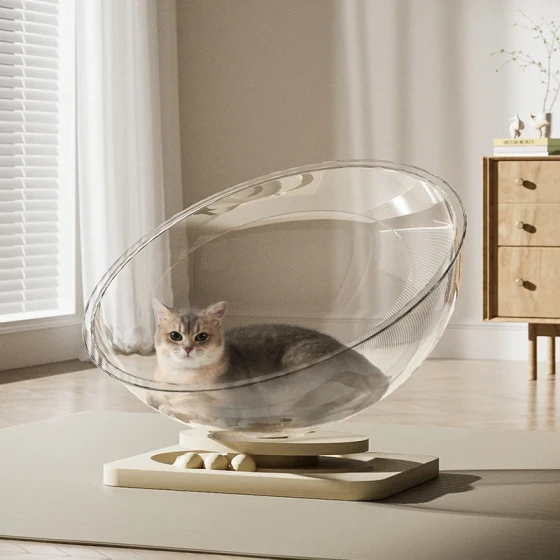Touching a cat with feline panleukopenia, is washing hands enough when going home_Complete disinfection and protection after contact with sick cats
After touching a cat suspected of having feline panleukopenia, merely washing your hands is not enough. The virus can spread through clothing, shoes, and other items, posing a serious threat to other cats. Therefore, thorough disinfection and protective measures are necessary.
Feline panleukopenia, formally called Feline Panleukopenia Virus (FPV), is a highly contagious disease caused by the feline panleukopenia virus that mainly affects cats, especially kittens. This virus attacks the bone marrow, lymphatic tissue, and intestinal epithelial cells, causing a rapid decrease in white blood cells and severe intestinal symptoms such as vomiting, diarrhea, and dehydration. The disease progresses quickly with a high fatality rate, particularly deadly for unvaccinated kittens. Although feline panleukopenia cannot infect humans or cause illness in people, after contact with infected cats, we may become virus carriers, spreading it to the environment and thereby infecting healthy cats.

Why is thorough disinfection so important?
The feline panleukopenia virus is very resilient. It is a non-enveloped virus, which means it is more resistant to environmental changes and many common disinfectants than many enveloped viruses (such as feline herpesvirus, feline calicivirus). The feline panleukopenia virus can survive in suitable environments for up to a year or even longer. Imagine it like a “persistent tenant” – this virus can remain on your home's floor, furniture, clothes, and even the soles of your shoes for a long time, potentially threatening healthy cats at home or elsewhere. Therefore, simply washing your hands cannot remove the virus attached to clothes, shoes, or other items.
Steps for thorough disinfection and protection after contact with sick cats
Since we cannot ignore this potential risk, how should we carry out comprehensive disinfection and protection after contact with a cat suspected of feline panleukopenia? It’s like fighting a full-scale blockade, requiring multiple measures simultaneously.
-
Wash hands immediately: This is the most fundamental and important step. Use soap and running water to thoroughly wash your hands for at least 20 seconds, including between fingers, the back of hands, and under nails. This can wash away most viral particles on your hands. Although washing hands cannot completely kill the stubborn feline panleukopenia virus, it physically removes a large amount of contamination.
-
Handle clothing and personal items:
- Change clothes: Remove the clothes worn when contacting the sick cat immediately.
- Wash clothes: Put these clothes separately in the washing machine, use hot water (if the clothing allows) and detergent. The feline panleukopenia virus is sensitive to heat; high-temperature washing helps kill the virus.
- Disinfect clothes: After washing, if possible, soak them in a diluted chlorine bleach solution (like 84 disinfectant) for disinfection (check the clothing label to ensure bleach will not damage the fabric). According to Massey University Veterinary School, diluted bleach is one of the most effective disinfectants against FPV.
- Shoe disinfection: Both shoe soles and uppers may carry the virus. You can wipe shoes with diluted bleach solution or expose shoes to sunlight; ultraviolet light also has some virus-killing effects.
- Other items: Phones, keys, and other personal items may also be contaminated. You can wipe them with alcohol or disinfectant wipes.
-
Environmental disinfection:
- Floors and hard surfaces: Use a diluted chlorine bleach solution to wipe floors, furniture surfaces, door handles, and other hard surfaces. Important dilution ratio: It is generally recommended to use a 1:32 bleach dilution (for example, 1 part bleach to 32 parts water). Ensure surfaces remain wet for at least 10-15 minutes for the disinfectant to work thoroughly.
- Soft surfaces: Disinfecting soft surfaces such as sofas and carpets is more difficult. You can use professional pet disinfectants or steam cleaners for high-temperature disinfection. If possible, sun exposure is also a good option.
- Ventilation: When using bleach and other disinfectants, keep indoor air circulating by opening windows to avoid inhaling harmful gases.
-
Isolation measures (if you have other cats at home): If there are other healthy cats at home, after coming back from contact with a sick cat, immediately isolate yourself from the healthy cats. Do not contact the healthy cats until you have thoroughly disinfected yourself and all possibly contaminated items. The isolation period may last several weeks because the virus incubation period is about 3-7 days. Closely observe the healthy cats' appetite, mental state, and excreta, and seek veterinary care immediately if abnormal symptoms appear.
-
Consult a veterinarian: If the cat you contacted has been diagnosed with feline panleukopenia, or you are very concerned about potential virus transmission, it is best to consult a professional veterinarian. They can provide more specific disinfection advice and guide you on protecting other cats in your home.
Why are common household disinfectants not enough?
Many common household disinfectants on the market, such as Dettol and Walch, mainly target bacteria and some enveloped viruses. But the feline panleukopenia virus is a non-enveloped virus, with a simpler, more stable structure and stronger environmental resistance. Therefore, to combat feline panleukopenia, disinfectants effective against non-enveloped viruses are required; currently, chlorine bleach is widely recognized as the most effective and readily available. There are also some specialized pet disinfectants for feline panleukopenia, which can be selected under veterinary guidance.
How long can the feline panleukopenia virus survive outside the body?
As mentioned earlier, the feline panleukopenia virus is very resilient in suitable environments. According to Cornell University College of Veterinary Medicine, FPV can survive in the environment for up to a year or longer. This is why thorough environmental disinfection is crucial, especially if there are unvaccinated or immunocompromised cats at home.
Frequently Asked Questions
- Can hand soap or hand sanitizer kill the feline panleukopenia virus? Most hand soaps and sanitizers are limited in effectiveness against the feline panleukopenia virus. They mainly reduce bacteria and some viruses through physical friction or alcohol’s dehydrating effect but are ineffective against the tough feline panleukopenia virus. Thorough handwashing with soap and water followed by effective disinfectants (such as diluted bleach) is key.
- Will I get sick if I touched a cat with feline panleukopenia? No. FPV only infects felines, is non-pathogenic to humans, and does not cause illness in people.
- If my clothes are contaminated with the feline panleukopenia virus, how long will the virus remain active? The virus survival time on clothing depends on factors like temperature, humidity, and presence of organic matter (such as feces or vomit). Under favorable conditions, the virus can survive on clothes for a considerable time. Therefore, it's necessary to promptly wash and disinfect clothes after contact with sick cats.
- My home has healthy cats. After contact with a sick cat, how long should I isolate before contacting them again? For safety, it is recommended to wait at least 24 hours after thorough personal and environmental disinfection before contacting healthy cats and preferably change into a clean set of clothes. If the sick cat was active at home, environmental disinfection needs to be more thorough and may require an extended period. Consulting a veterinarian is the safest approach.
Summary
After touching a cat suspected of feline panleukopenia, simple handwashing is far from sufficient. To protect other healthy cats from this highly contagious virus, we must take more comprehensive and thorough disinfection and protection measures. This includes immediately washing and disinfecting clothes and shoes, thoroughly sanitizing living environments, and strictly adhering to isolation protocols to prevent the virus from spreading through us as “intermediate hosts.” Remember, “better safe than sorry”; a bit more caution can provide added protection for healthy cats. When uncertain or in doubt, seeking professional veterinary help promptly is a wise choice.
References:
Feline Panleukopenia. Cornell University College of Veterinary Medicine.
Feline Panleukopenia Virus (FPV) Information Sheet. Massey University Veterinary Teaching Hospital.
-560x560.webp)


-560x560.webp)